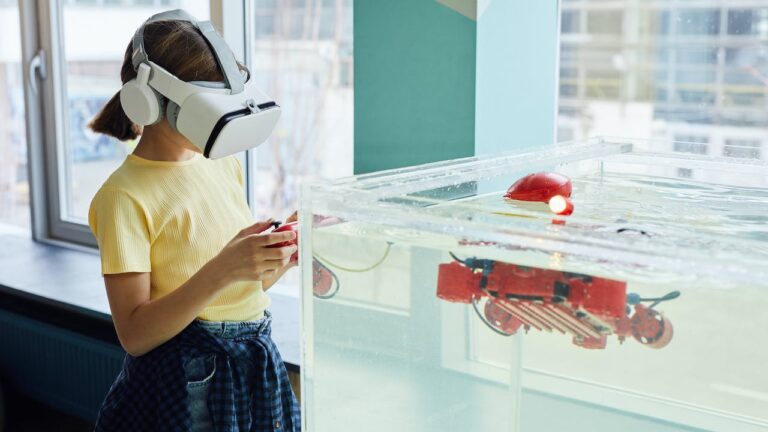Understanding Vision Technologies: A Primer
At its core, vision technology refers to systems and devices that can record, process, and interpret visual information from the world, akin to the way human eyes and the brain work together. This field encompasses a range of applications, including image capture, processing, analysis, and pattern recognition.
The Components of Vision Technology
The architecture of a typical vision technology system includes:
- Sensors: Devices like cameras or specialized imaging systems that capture visual data.
- Processors: High-speed processors capable of handling complex algorithms to analyze the captured data.
- Software: Advanced software solutions that facilitate image processing, pattern recognition, and decision-making.
- Output Devices: Monitors, actuators, or other systems that act based on the processed visual data.
The Technologies Behind the Vision
Several key technologies enable the functionality of vision systems:
- Machine Learning and AI: For processing and making sense of visual data.
- Computer Vision: Algorithms that allow computers to interpret and understand the visual data.
- Image Processing: Techniques to enhance or modify images to extract more information.
- 3D Scanning and Modeling: Creating digital representations of physical objects.
The Spectrum of Vision Technologies Applications
Vision technologies have found applications in virtually every industry imaginable, some of which include:
In Manufacturing and Industrial Automation
Vision technology has become a cornerstone of modern manufacturing. It allows for automated inspection, quality control, and robotic guidance. In industrial settings, vision systems can detect defects, sort products, and guide machines for precise operations.
In Healthcare
Medical imaging and diagnostics have been revolutionized by vision technologies. From MRIs to CAT scans, the ability to visualize the human body’s interior has provided unparalleled diagnostic capabilities. Moreover, vision technologies facilitate advanced surgeries through robotics and real-time imaging.
In Retail and Commerce
Retailers use vision technology for everything from inventory management to customer service. Smart cameras can track inventory levels, help with loss prevention, and even analyze customer traffic patterns to optimize store layouts.
In Security and Surveillance
Security applications are perhaps the most recognized use of vision technology. Surveillance cameras can now identify individuals, track movements, and analyze behavior patterns for safety and law enforcement.
In Autonomous Vehicles
The automotive industry is being transformed by vision technologies. Self-driving cars rely on cameras and sensors to navigate and avoid obstacles, essentially acting as the vehicle’s eyes on the road.
In Agriculture
Precision agriculture employs vision technology for monitoring crop health, identifying pests, and even directing autonomous tractors and drones.
The Future Is Now: Emerging Trends in Vision Technologies
The future of vision technologies is as diverse as it is promising, with several emerging trends:
AI and Deep Learning
AI, particularly deep learning, has enhanced the capabilities of vision systems exponentially. Deep learning algorithms can analyze more complex images with higher accuracy, enabling more sophisticated applications.
Edge Computing
With edge computing, vision technology systems can process data on the device itself rather than relying on a centralized server. This reduces latency and allows for real-time processing, critical for applications like autonomous driving.
Miniaturization and Integration
Cameras and sensors are getting smaller, more powerful, and more integrated. This miniaturization enables the incorporation of vision technologies into everyday objects and devices, contributing to the growth of the Internet of Things (IoT).
Enhanced Connectivity
As 5G and other advanced networking technologies become more widespread, the connectivity of vision technology devices improves, allowing for faster data transfer and communication between devices.
Challenges and Considerations in Vision Technologies
Despite their promise, vision technologies also present challenges and considerations that must be addressed:
Privacy Concerns
As cameras become more ubiquitous and powerful, privacy issues come to the fore. Balancing security and privacy is a critical challenge for the industry.
Data Management
Vision technologies generate vast amounts of data. Effectively storing, processing, and managing this data is a significant challenge.
Ethical Use
There’s a growing concern over the ethical use of vision technologies, especially regarding surveillance and the potential for bias in AI algorithms.
Cost
While costs are decreasing, sophisticated vision systems can still be a significant investment, especially for small businesses and in developing countries.
Vision Technologies: A Glimpse into the Future
Vision technologies are not standing still. Research and development continue to push the boundaries of what’s possible. Innovations like quantum imaging, which could revolutionize how we capture and process visual information, are on the horizon.

